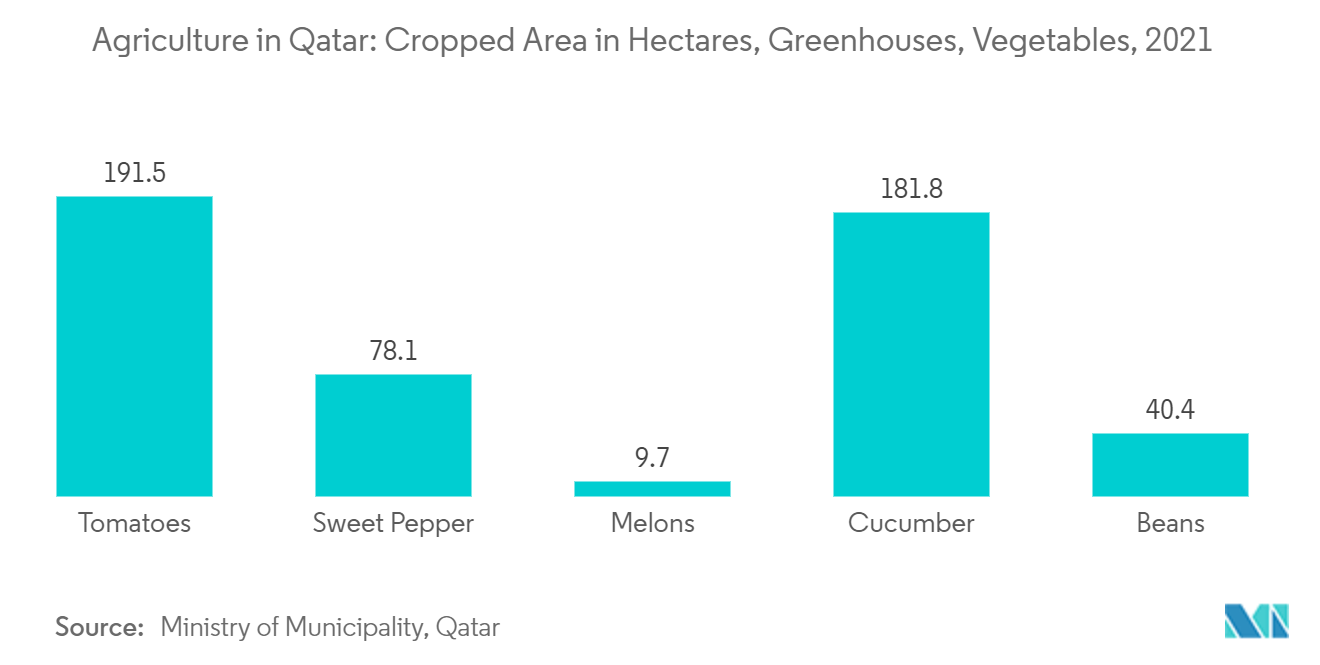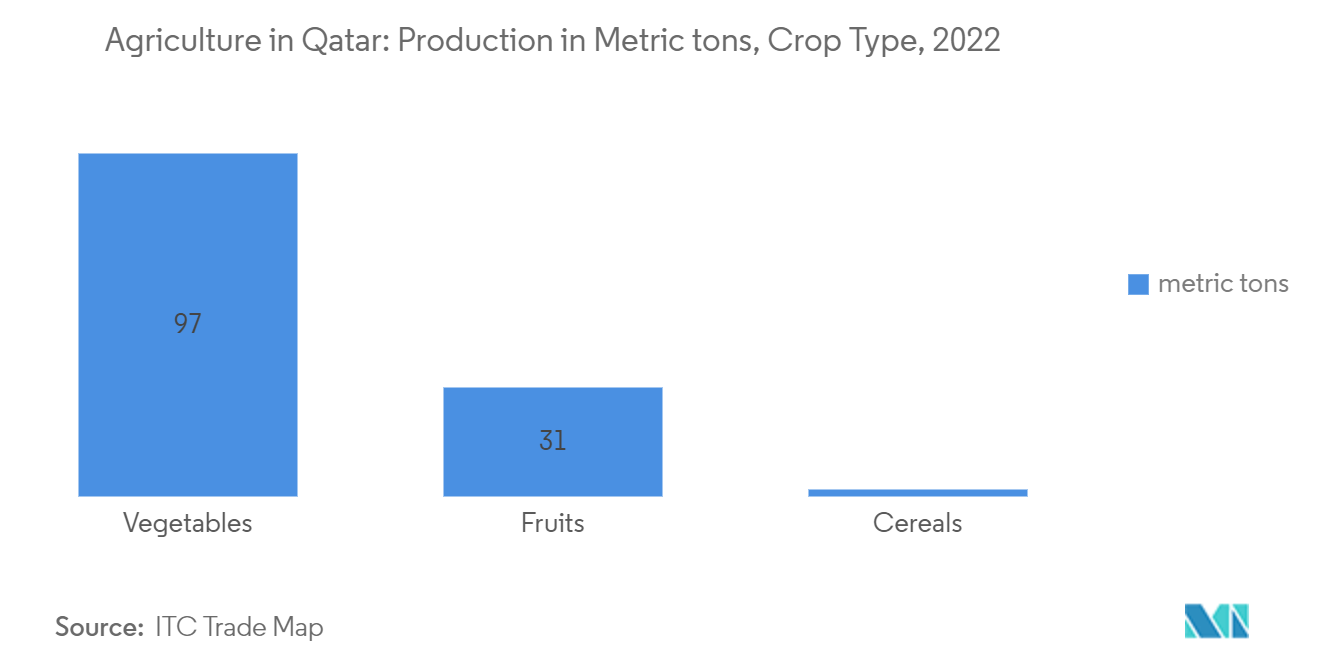Market Trends of Qatar Agriculture Industry
Rising Adoption of Sustainable and Smart Technologies Boosting Agriculture in Qatar
Qatar, known for its low rainfall and high temperatures, has tackled these hurdles head-on. In recent years, the nation has embraced innovative agricultural methods, including hydroponics, smart irrigation, and aquaponics. These approaches not only enhance the use of arable land but also elevate the quality of its produce. One of the country’s standout innovations is aquaponics, a method that merges aquaculture and hydroponics. In 2021, Qatar launched its national agriculture project, which was developed through an aquaponic system that utilizes aquaculture and hydroponics.
Furthermore, the Department at the Ministry of Municipality is working to encourage farms by launching various agricultural initiatives and providing technical support and services to farmers. The government has completed 58% of the drive to distribute and install greenhouses. In 2022, the country produced the highest vegetable production of tomatoes, with 44,923.6 metric tons, with coverage of an area of 666 hectares in greenhouses, followed by cucumber and sweet pepper. Such developments will drive the country to adopt smart farming practices to become self-sufficient in agricultural production over the coming years.
Qatar University's Agricultural Research Station (ARS) has developed a cutting-edge vertical farming system to address the country’s agricultural challenges. This innovative method involves growing plants indoors in stacked layers, optimizing space and resource use. The system utilizes precise climate control, LED lights, and automation for year-round, high-quality production. The ARS is further adapting this technology to Qatar's specific conditions, promising new research opportunities and a sustainable local food source. For instance, in 2021, iFarm joined forces with Sadarah to enhance sustainable vertical farming in Qatar. They jointly manage a large-scale indoor farm, utilizing iFarm's advanced technology that recycles unused water.

The Vegetable Segment Dominates the Market
According to the Minister of Municipality and Environment, Qatar is planning to achieve self-sufficiency in vegetable production over the coming years. The country started its new Qatar National Food Security Strategy 2024-30 by leveraging the achievements accomplished by the 2018-23 National Food Security Strategy. This new strategy will enable a more sustainable food security system for the country in terms of increasing self-sufficiency in vegetables like tomatoes, cucumbers, peppers, cauliflower, potatoes, eggplant, onions, and cabbage. For instance, in 2022, the country's vegetable production reached 97,519 metric tons, representing a significant 71% share of the nation's total agricultural output, underscoring its market dominance.
Local farms in Qatar are enhancing their vegetable production through advanced methods that are tailored for both outdoor and indoor cultivation. These efforts encompass the adoption of cutting-edge equipment and techniques specifically designed for the nation's hot and arid climate. From greenhouses to water-conserving irrigation methods and innovative cooling technologies, these advancements ensure a year-round supply of vegetables, bolstering Qatar's domestic production. Consequently, these initiatives are fueling the growth of the local vegetable market, with many agricultural farms in the country scaling up their production. For instance, Executive Director of Business Relations at Hassad Food Mubarak Al Sahouti said that the quantity of vegetables received from domestic farms increased by 20% in 2023 in comparison to the previous year. The domestic market requirement is 2,000 metric tons of cucumbers and 6,000 metric tons of tomatoes, which are procured from Qatari farms during the agriculture season.


